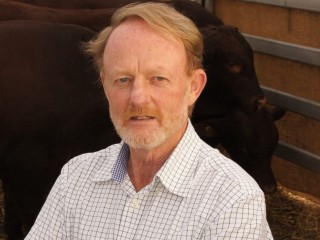 Australian cattle prices are not likely to decline much further, and in fact are likely to rise again in the next few months, according to respected meat and livestock market analyst, Peter Weeks.
Australian cattle prices are not likely to decline much further, and in fact are likely to rise again in the next few months, according to respected meat and livestock market analyst, Peter Weeks.
Speaking at the Meat Profit Day at Eidsvold, Central Queensland on Tuesday, Mr Weeks suggested the turnaround in prices would be helped by some pick-up in US beef prices, as US domestic production started falling in coming quarters, and also some improvement in business in Japan as it comes out of its wet season into a stronger demand period.
Formerly Meat & Livestock Australia’s chief analyst, Mr Weeks is now a private consultant to industry.
Looking at recent trends in Australian cattle market performance, he said while the big jump in prices late last year and in early 2011 was largely attributed to the impact of rain, while that certainly helped, it was basically driven by a global rise in beef prices at the time.
The surge in prices that started in the US late last year was quickly followed by Brazil which saw a 20pc rise in cattle prices, and then Australia.
“That has all faded in more recent times, with falls of 10 to 15 percent in prices since March, and 15-20pc in some cases for heavier steers, accentuated by weakness in Japan and the US and a higher Australian dollar,” Mr Weeks said.
“But there is also the impact of a very uncertain global economy that is making everyone somewhat nervous, and most recently, the Indonesian live export suspension has only added to levels of uncertainty.”
While there was no evidence of the live export issue affecting meat sale performance at retail in Australia, it was making some buyers within cattle markets nervous.
One of the factors that had provided a big buffer through the period of market demand weakness since March had been the season across eastern and northern Australia, Mr Weeks said.
“That’s given producers the option of hanging-on to stock to choose when they market their cattle. Certainly when those animals do enter the supply chain, they are in good condition and displaying plenty of weight.”
Recent declines seen in Australian cattle prices were not likely to continue much further and were likely to lift again in coming months, peaking around September/October, Mr Weeks said.
“The Japanese market is still weak at present, due both to the Tsunami impact, which will ease over time, and also the general state of the economy. But the market will not get a true indication of where Japanese demand is heading until well into July, at earliest,” he said.
Trade with Japan had also been weak because of very strong competition from US product, which had been driven hard by the lower value of the US$, allowing US exporters to put product into the market a lot cheaper than before.
While Australia’s trade into the US market had slipped quite dramatically in terms of volume, it was in fact at record levels in terms of price, if it was considered in US$ value terms, Mr Weeks said (see graph below).
“Our 90CL manufacturing beef prices into the US in local currency terms have been very strong. They have eased as little of late, which has contributed to the recent cattle price fall seen in Australia, but that has come off pretty high levels.
“But when converted into A$ value, the impact of currency can be clearly seen, where prices are not extraordinary, but not weak either.”
So why then, are Australia’s exports to the US at such low levels, not seen since the 1960s?
Mr Weeks said the answer lay in part with the A$ value, but also because of very costly protocols for all beef in the US market, caused by ongoing E.coli contamination problems in US domestic beef. That meant Australian imports were having to carry some costly regulatory burdens that other customer countries did not require.
The other explanation was much more positive: the surge in manufacturing beef demand in other parts of the world.
Illustrated clearly in the accompanying graph, below, the trade into the US (blue) is being offset by trade into ‘other’ markets (green) such as Russia for manufacturing beef and lower-grade cuts; and also to some degree into Japan, where manufacturing beef sales in recent years have been strong and keep rising. Indonesian boxed beef sales (white) have also grown in recent years, particularly for manufacturing beef, mostly for bakso ball (meat dumpling) production.
“All that is being helped by the South American situation,” Mr Weeks said.
“Competition from Brazil is reasonably weak at the moment in most markets, and that is why Australia’s penetration into markets like Russia is tracking so well.”
Brazil’s own beef supplies are falling; its currency is appreciating like Australia’s; and the nation is experiencing strong domestic demand as well as out of Europe, the Middle East and in parts of Southeast Asia. Those factors have caused a rise in prices for Brazilian beef, which is likely to remain high in coming years.
Pointing to the previous spike in world food prices in 2008 that sparked riots over food security in some countries, Mr Weeks warned that prices for meat (and food generally) were back to those levels again, and looked like going even higher over the next couple of years.
“Basically, demand keeps growing, and supply isn’t growing to keep pace,” he said.
- See separate story: Livex closure would cost industry $128m/year
